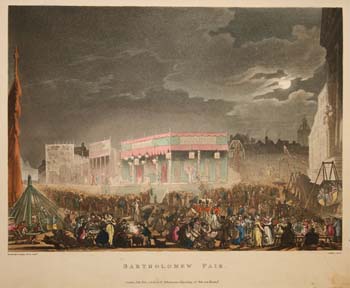Introduction

Color plate books were a popular phenomenon in the nineteenth century, especially in Great Britain. This was the heyday of English landscape painting and topographical illustration, so it is not surprising that color plate books often depict landscapes or travels, both far away and close to home. The other major influence on color plate illustration was caricature. As John Harthan states, color plate books span both the era of Romanticism and the growth of caricature and Realism. Many color plate books combine landscape and caricature to create a full and rounded portrait of the events and places they portray, presenting both urban and rural areas -- town and country -- in miniature versions for those who were unable to travel or who wished to remember their voyages. As visual representations in a time when there were few other visual media, color plate books provide an important non-narrative representation of their world.
In addition to historical trends in content, color plate books were influenced by changes in printing techniques. The most important of these was aquatint, which produces watercolor-like images and represents landscape especially well. It was the introduction of aquatint and, later, chromolithography which led to the explosion of color printing. Color plate books are representative objects of their time, showing the preoccupations and interests of their creators. They showcase the evolving content and illustration techniques of their day and have their own unique place in book history.
"Town and Country in Miniature" presents an overview of color plate books, focusing on the genres that were produced and their illustrators. Most of the books described were originally part of the collection of Jesse Spencer, a Rock Island lawyer whose books Augustana purchased in 1949. They serve as a representative sample of illustrations from this period of printing history.
